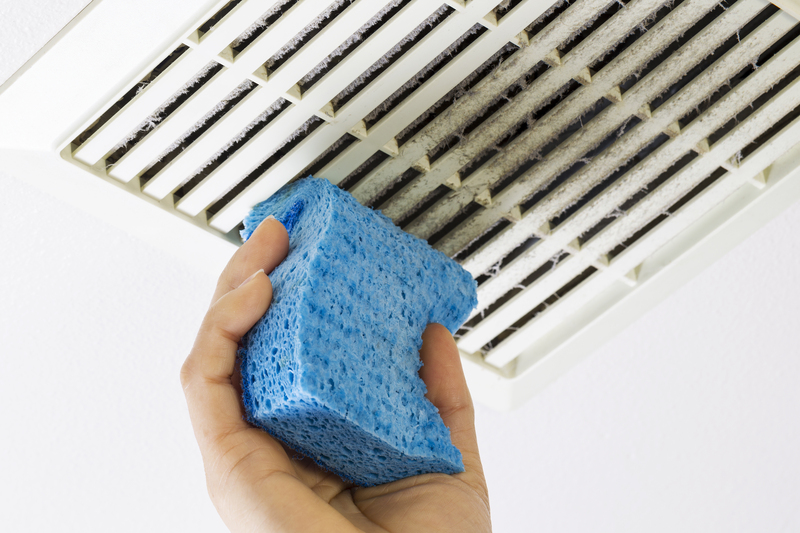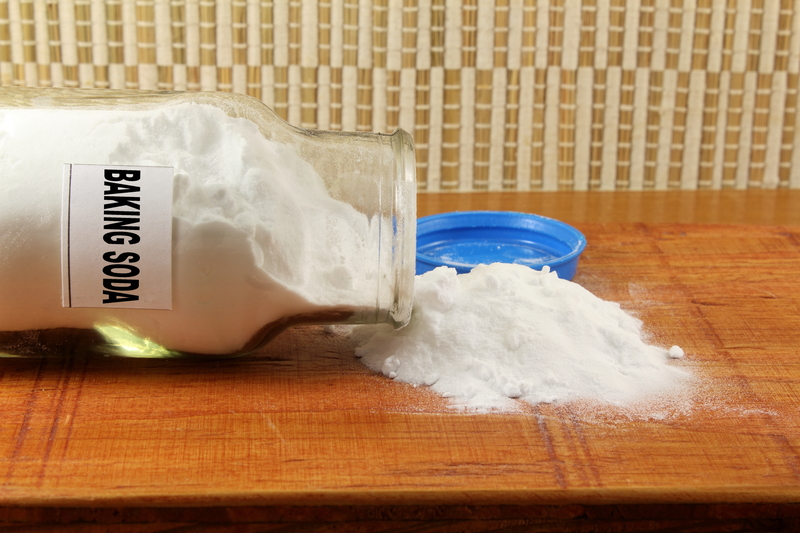Practical Ideas for Getting Rid of Damp Odor
Posted on 01/07/2025
Practical Ideas for Getting Rid of Damp Odor
Are you frustrated by a musty, unpleasant smell lingering in your home? Damp odors can quickly turn a cozy living space into an uncomfortable environment. These intrusive smells are often caused by moisture build-up, poor ventilation, or hidden mold growth. Fortunately, there are many practical and effective methods for eliminating damp odors and keeping your home fresh and inviting.

Understanding the Causes of Damp Odor
Before tackling the issue, it's important to understand what causes damp odor in the first place. Musty, damp smells are typically a sign that moisture is present in an area where it shouldn't be. Here are the most common culprits:
- Water leaks: Leaking pipes, roofs, or windows can introduce excess moisture.
- Poor ventilation: When air doesn't circulate, moisture becomes trapped and breeds odor.
- Condensation: Inadequate insulation can create condensation on walls and windows.
- Mold and mildew: Fungal growth due to moisture is a major contributor to persistent smells.
- Flooding: Past floods or spills that haven't dried properly can leave a lasting odor.
Identifying the source of dampness is the first step in permanently removing damp odors from your space.
Quick Actions for Immediate Relief from Damp Smells
Improve Ventilation Right Away
One of the fastest and most effective ways to remove damp odors from a room is to increase air circulation. Open windows and doors to let fresh air flow through your house. If the weather cooperates, set up fans near windows to help expel stale, moisture-laden air. Good ventilation not only reduces musty smells but also discourages the growth of mold and mildew.
Use Natural Odor Absorbers
Nature offers several low-cost, non-toxic solutions for banishing damp odors:
- Baking soda: Leave open bowls of baking soda around the affected rooms to absorb smells.
- Activated charcoal: This powerful odor neutralizer is perfect for closets, cabinets, or under sinks.
- White vinegar: Place bowls of vinegar in musty-smelling rooms or use vinegar in a spray bottle on hard surfaces.
- Fresh coffee grounds: Place dry coffee grounds in a small container to neutralize odors.
Rotate these natural deodorizers every few days for best results in removing damp smell.
Launder Problematic Fabrics Promptly
Textiles easily trap and retain moisture. If you have curtains, rugs, blankets, or upholstery that smell damp, wash them immediately. Add a cup of vinegar to your washing machine's rinse cycle to fight odor at the source. For items too large to launder, sprinkle baking soda liberally, let it sit overnight, and vacuum it up in the morning.
Comprehensive Solutions to Eliminate Damp Odor for Good
Identify and Fix Moisture Sources
To remove damp odor permanently, you must eliminate moisture at its source. Investigate areas prone to water intrusion:
- Check for leaks: Inspect plumbing under sinks, near water heaters, and behind appliances for drips or water stains.
- Assess your roof and gutters: Damaged shingles and blocked gutters can force water into your house.
- Seal windows and doors: Use weather stripping or caulk to prevent rain or condensation from entering.
- Look for cracked tiles or damaged grout: In bathrooms, kitchens, or basements where moisture is common.
Addressing these issues promptly will help maintain low humidity and prevent future damp odors.
Control Indoor Humidity
High indoor humidity encourages the growth of mold and mildew. Investing in a dehumidifier is one of the most reliable solutions for removing musty smells:
- Set dehumidifiers to 30-50%: This is the ideal humidity level for most homes.
- Place dehumidifiers in damp-prone areas: Such as basements, laundry rooms, or bathrooms.
- Use exhaust fans: Run them after showers or when cooking to vent moist air directly outside.
Controlling humidity is a proactive way to stop damp odors before they begin.
Deep Clean Affected Areas
A thorough cleaning will eliminate the sources of odor bonded to surfaces. Here's how:
- Walls and floors: Wash with a mixture of water and vinegar to break down old mildew and grime.
- Carpeting: Have carpets professionally cleaned, or rent a carpet cleaner for deep stains and odors.
- Hard-to-reach spaces: Don't neglect underneath furniture, inside closets, and behind appliances.
- Mold removal: Scrub visible mold with a solution of 1 cup bleach to 1 gallon of water, always keeping the area well-ventilated.
After cleaning, make sure surfaces are completely dry before replacing rugs or furniture to avoid damp smells from returning.
Room-by-Room Guide to Banish Damp Odors
Kitchens
Kitchens are susceptible to musty kitchen odor because of frequent water use and steam from cooking:
- Regularly check under the sink for leaks or hidden spills.
- Use the range hood when cooking to capture steam.
- Clean garbage disposals and trash cans with baking soda and lemon.
- Empty and clean refrigerator drip pans, which can harbor moisture.
Bathrooms
Bathrooms are a common source of dampness and persistent odors. To keep them fresh:
- Always use an exhaust fan or open a window after a shower.
- Wash towels frequently and dry them promptly.
- Use mildew-resistant shower curtains, and wash them regularly.
- Clean tiles and grout weekly with anti-fungal solutions.
Basements and Cellars
Damp basements often have poor ventilation and are prone to leaks. For getting rid of musty smell in basements:
- Run a dehumidifier at all times.
- Inspect foundations for cracks and seal them promptly.
- Remove and discard water-damaged furniture or boxes.
- Install a sump pump if the area floods regularly.
Closets and Laundry Rooms
Closets and laundry rooms are hotspots for damp odors hiding in fabrics. For fresh-smelling storage areas:
- Avoid overstuffing closets.
- Use moisture-absorbing products like silica gel packs or hanging dehumidifiers.
- Store shoes, bags, and seasonal clothes thoroughly clean and dry.
- Leave closet doors ajar periodically to air them out.
Preventive Tips to Keep Spaces Odor-Free
Once you've removed stubborn damp or musty odors, keeping your home fresh is an ongoing effort. Practice these daily and seasonal habits to prevent smells from returning:
- Inspect for leaks: Check high-risk areas monthly, especially after storms or plumbing work.
- Use a hygrometer: Monitor humidity and take steps if it creeps above 50%.
- Wipe spills immediately: Don't let water sit on floors or carpets.
- Rotate deodorizers: Refresh natural odor absorbers every week.
- Clean HVAC filters: Dirty filters can circulate moisture and odors throughout your home.
- Seasonal deep cleaning: Focus on washing curtains, cleaning under furniture, and airing out storage areas once each season.
- Let sunlight inside: Sunlight acts as a natural disinfectant and helps dry out damp spaces.
When to Call a Professional
If, despite your efforts, the damp odor persists or is accompanied by visible mold growth or water damage, it's time to call a professional. Certified mold remediation specialists can identify hidden mold, safely remove it, and repair structural issues causing moisture intrusion. Prompt intervention protects your home and health from long-term damage.

Frequently Asked Questions About Removing Damp Odors
Will air fresheners permanently eliminate damp odor?
Air fresheners or scented candles may temporarily mask unpleasant smells, but they do not address the underlying moisture issues. For effective, long-lasting results, you must find and remove the source of dampness.
What are the best household products for damp smell removal?
Baking soda, white vinegar, and activated charcoal are top choices for absorbing odors naturally, safely, and economically.
How can I prevent damp odor in stored clothing and bedding?
Only pack away completely dry fabrics, store them in breathable bins or bags, and use silica gel packs or cedar blocks to absorb residual moisture.
Is a musty odor a sign of toxic mold?
Not always, but a persistent, earthy odor can indicate hidden mold growth. If you spot dark patches on walls, ceilings, or belongings, or if anyone in your household develops respiratory symptoms, have your home inspected promptly.
Conclusion: Enjoy a Fresh, Odor-Free Home
Getting rid of damp odor doesn't have to be a daunting task. By following these practical and effective strategies, you can eliminate musty smells, prevent them from returning, and create a healthier home for your family. Remember--the key is to tackle the source of moisture, maintain good ventilation, and clean affected areas thoroughly. With a little persistence and the right approach, your home will smell fresh and welcoming all year round.




